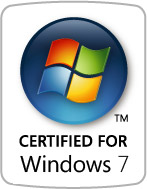 An upgrade install means simply inserting the installation media for your new operating system - Windows 7 in this case - and
running the installation program. It then notices whatever you have installed on your machine already, and upgrades it in place.
All your compatible applications and data remain - you're just running them in the new operating system.
An upgrade install means simply inserting the installation media for your new operating system - Windows 7 in this case - and
running the installation program. It then notices whatever you have installed on your machine already, and upgrades it in place.
All your compatible applications and data remain - you're just running them in the new operating system.That all actually sounds pretty nifty in principal. Unfortunately, there are two problems:
"... even if you can perform an upgrade I typically advise against it ..."
-
If you're running Windows XP, it's not supported. If you're "downgrading" the edition (i.e. from Vista Ultimate to Win7 Pro or
Home), as our questioner is, it's also apparently not supported.
-
If you can do it, history says the results aren't always as clean as the scenario might lead you to believe. Most major upgrades
often leave behind minor, and occasionally major, problems and issues.
In other words, whether you can upgrade or not, just perform a clean install anyway.
Like an upgrade, a clean install is very simple in concept, but unlike an upgrade it's more work.
-
Backup - at a minimum, backup all your data. Ideally, though, just backup everything with an image backup from
which you can restore individual files. In my experience, trying to identify what constitutes "your data" is almost always
incomplete, and you frequently find that later there's something you really wanted that you didn't think to include. Backing up
everything avoids that issue.
-
 Install Windows - when you install the operating system make certain to chose a new installation, overwriting
the old. If given the option, allow it to format the installation partition to erase everything there on. (A quick format is
sufficient.)
Install Windows - when you install the operating system make certain to chose a new installation, overwriting
the old. If given the option, allow it to format the installation partition to erase everything there on. (A quick format is
sufficient.)
-
Reinstall Applications - using their original
installation media, or their saved downloads, install the
applications that you use. I tend to install a few primary applications
that I use all the time right away, and then install others
over time as I need them.
-
Restore Data - copy back any and all data that you need from your backup: your documents, pictures,
what-have-you.







0 comments
Post a Comment